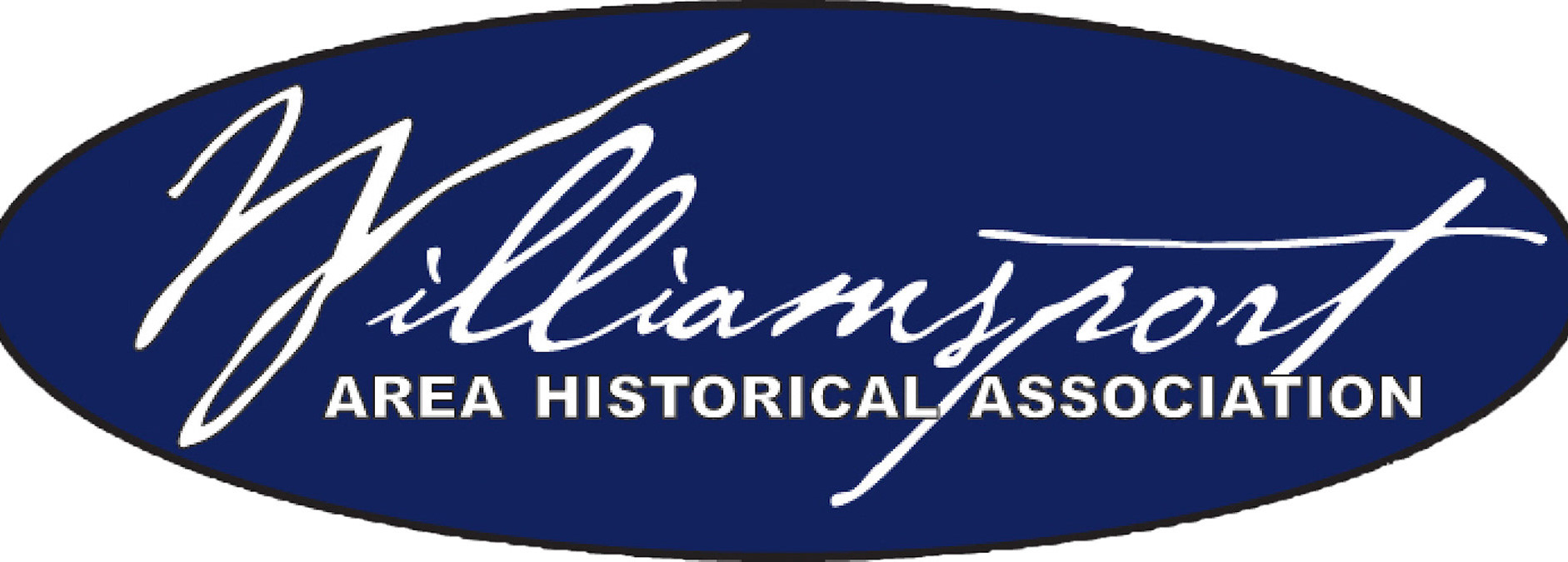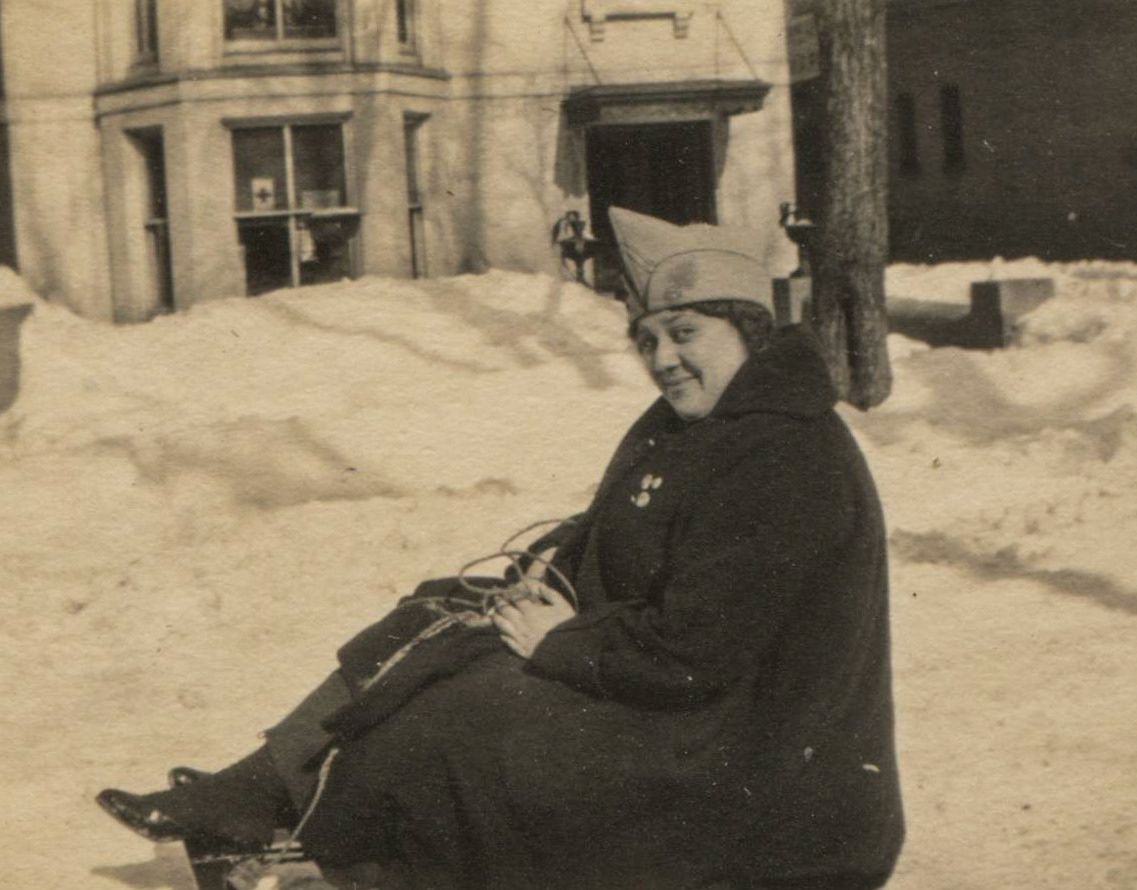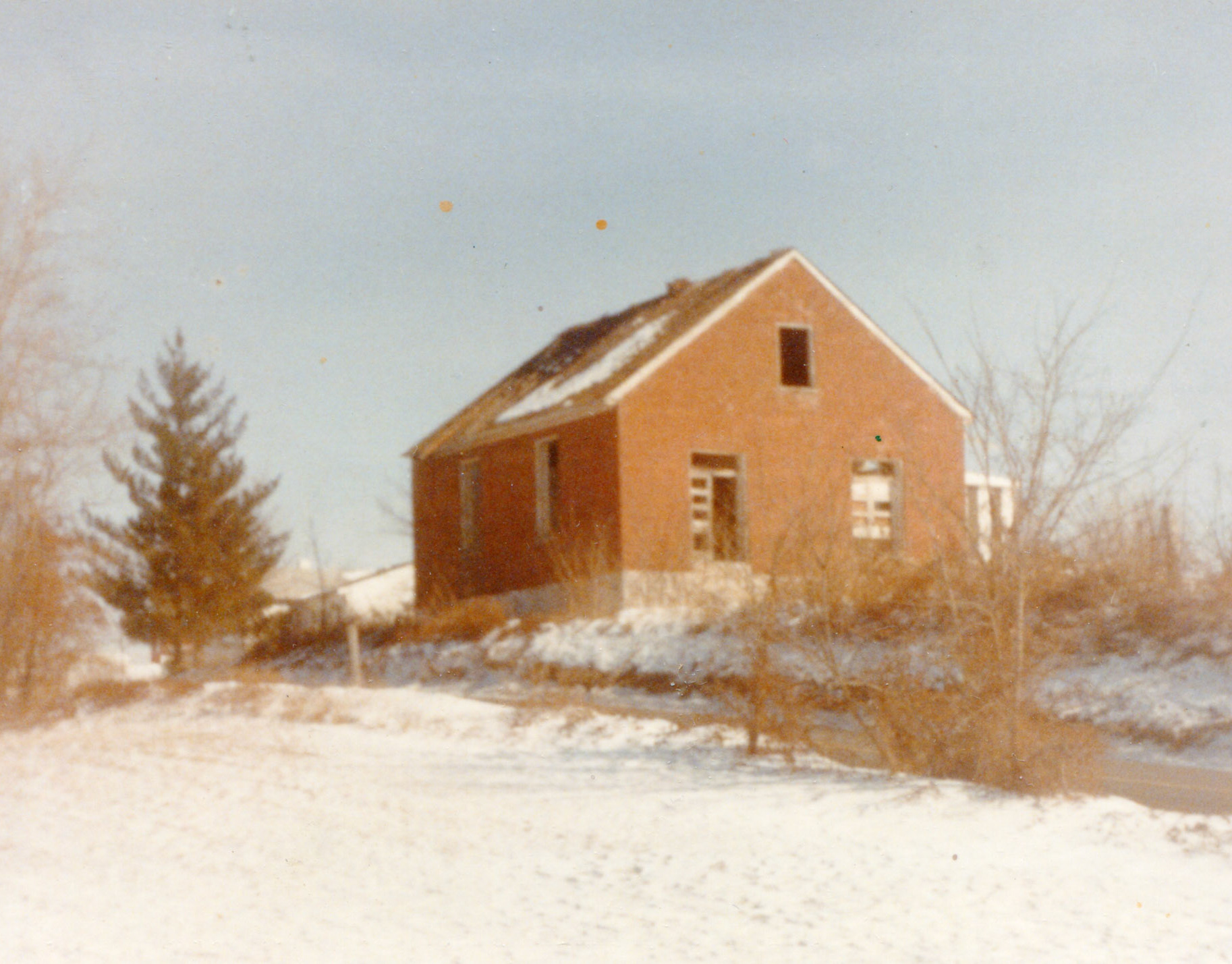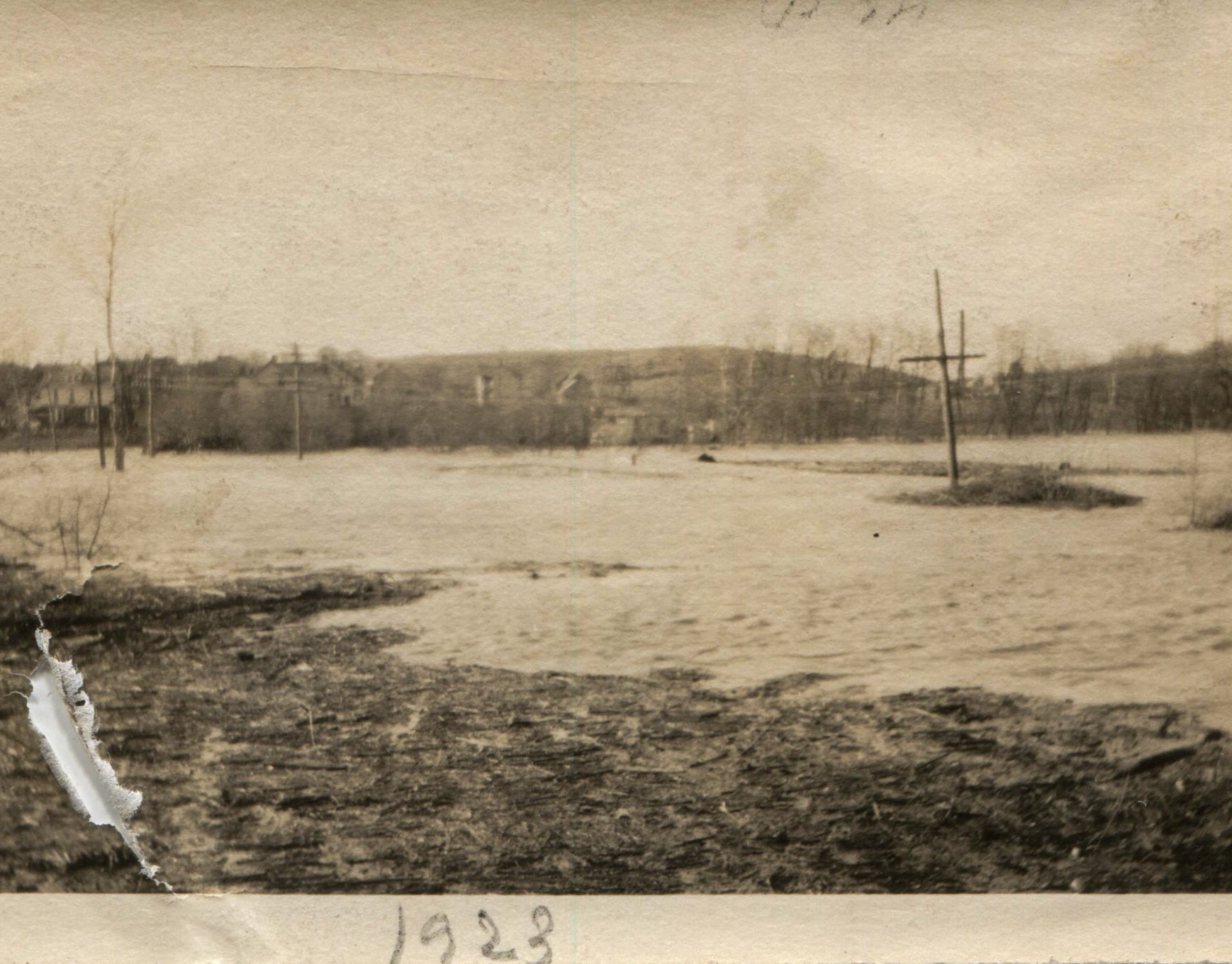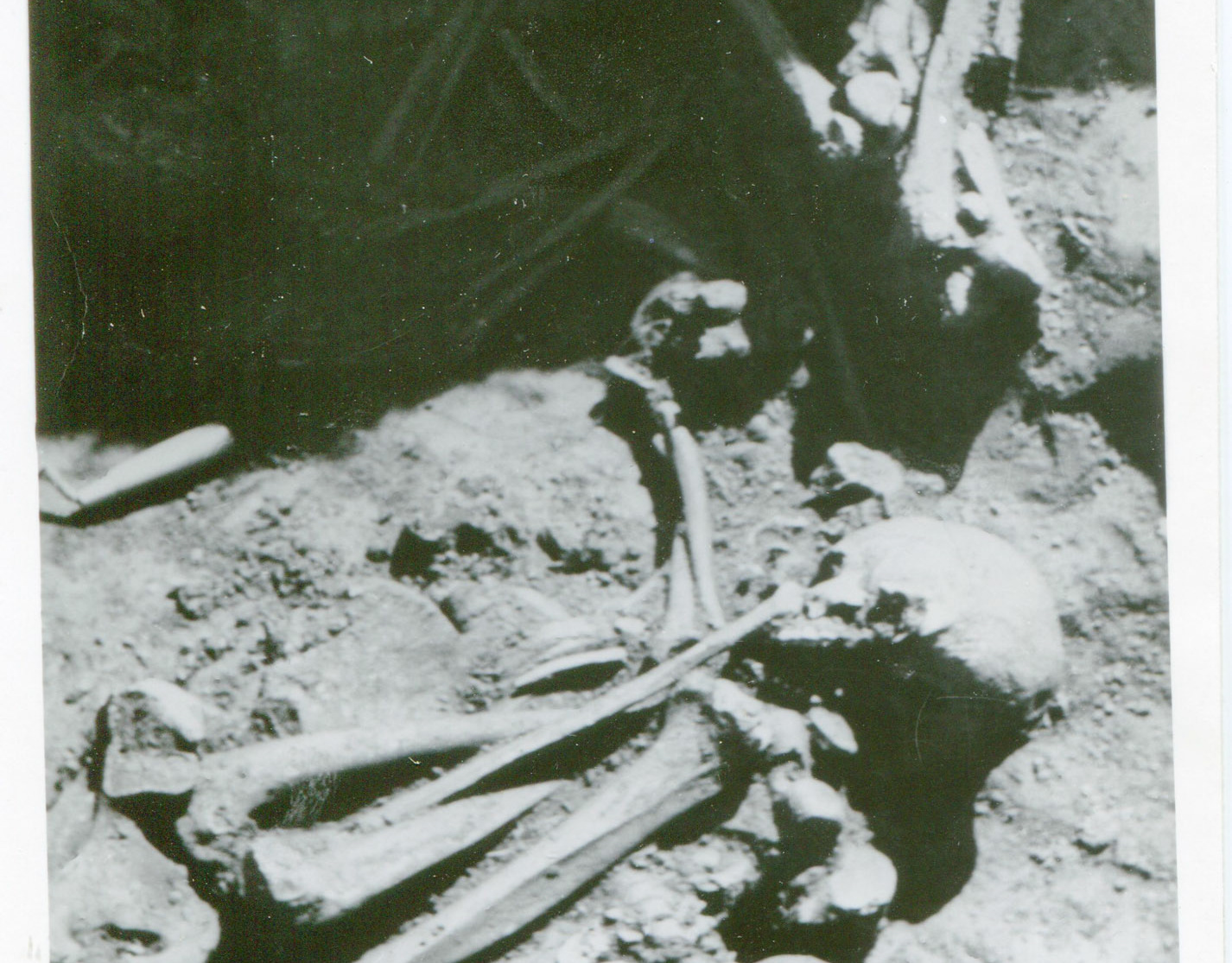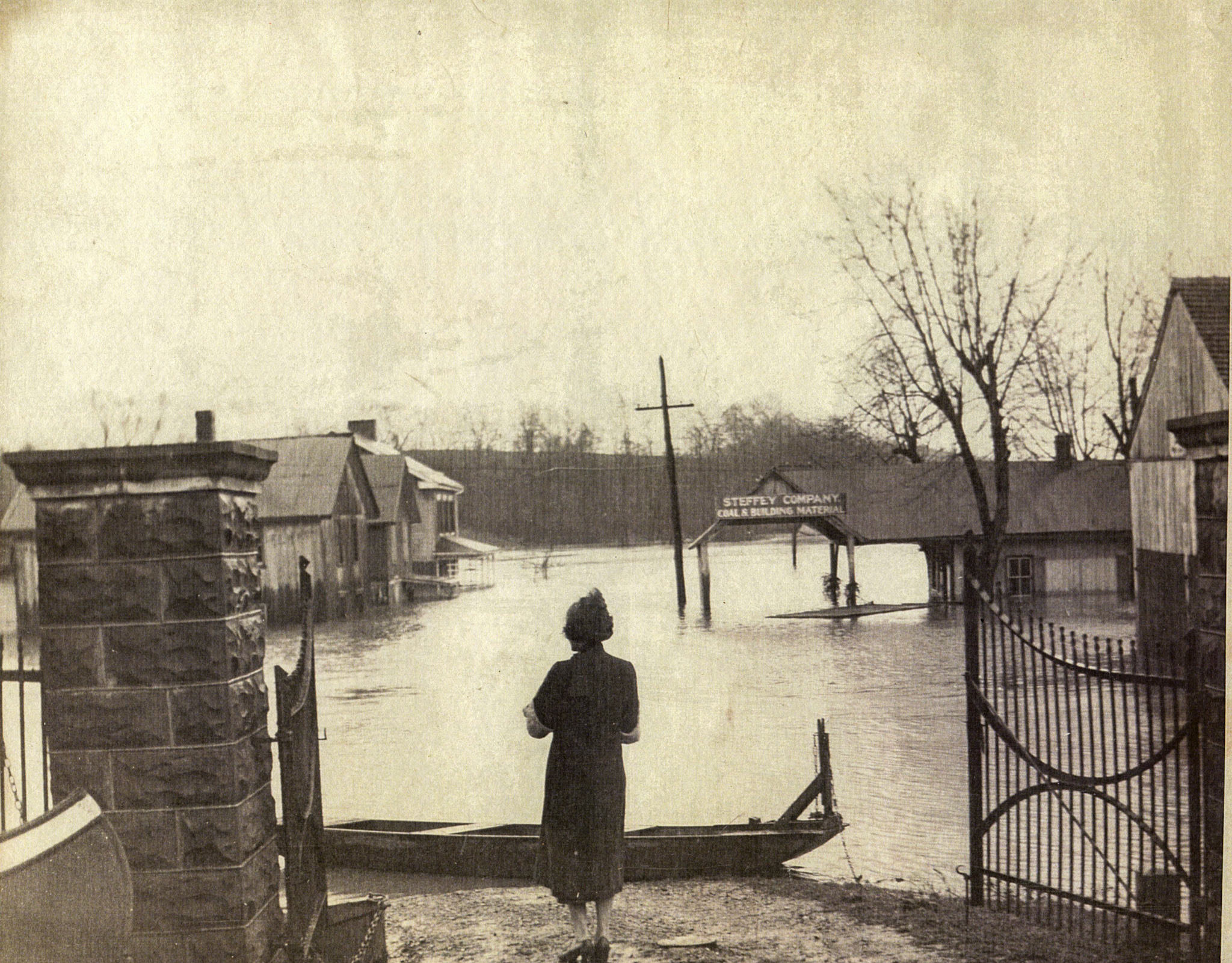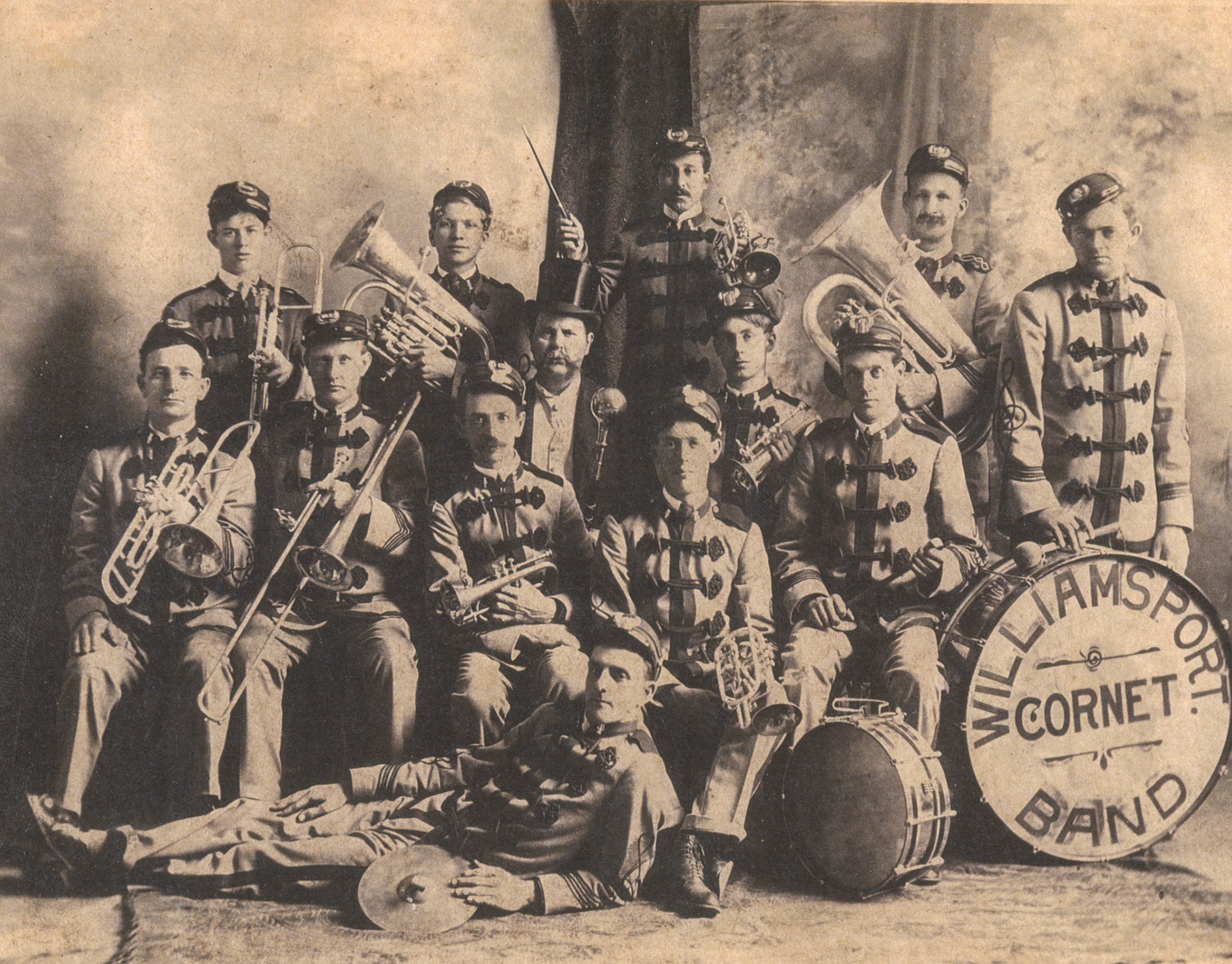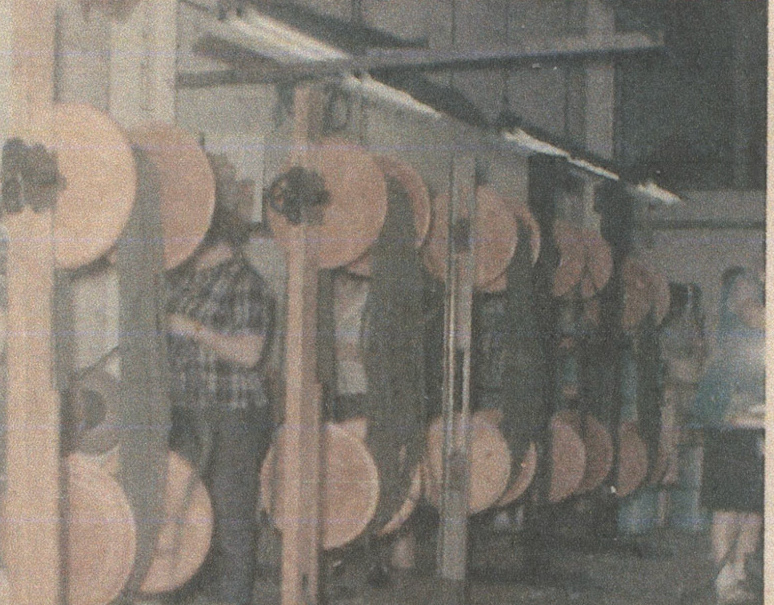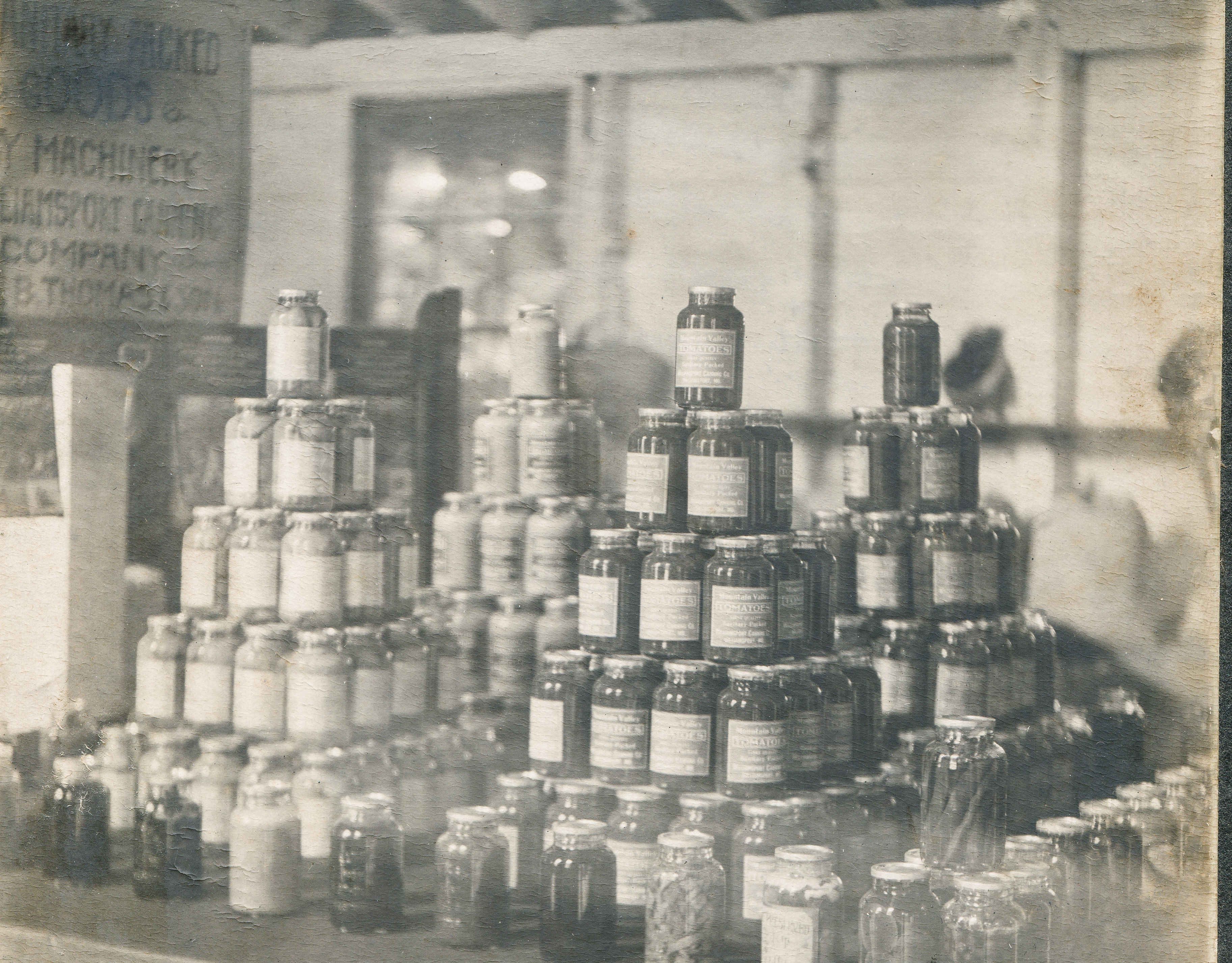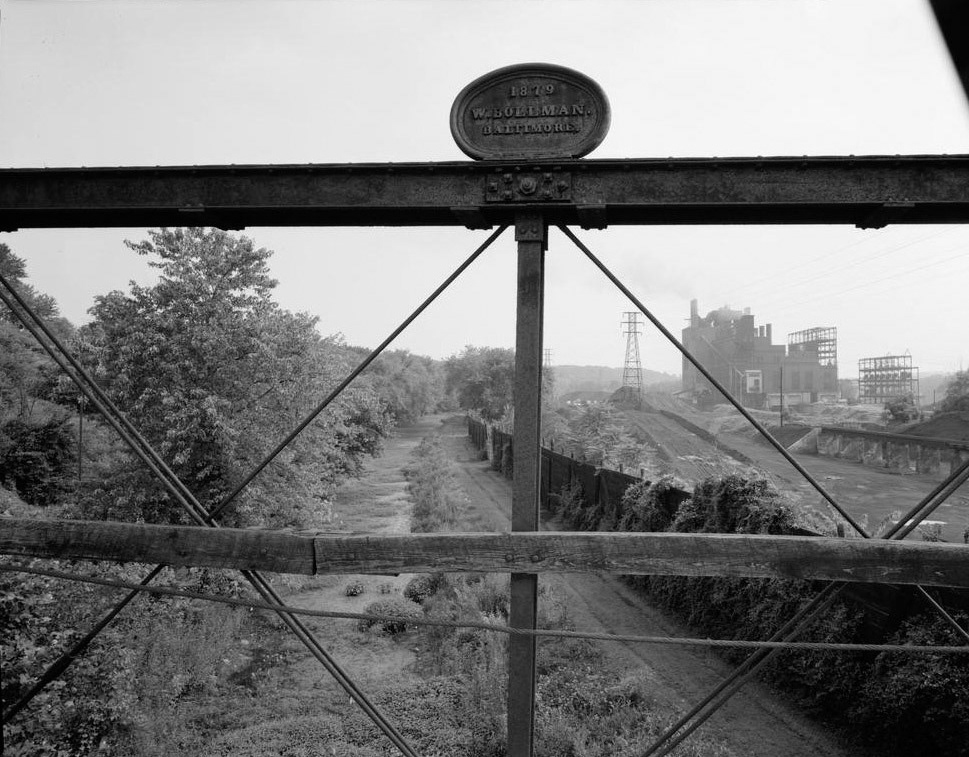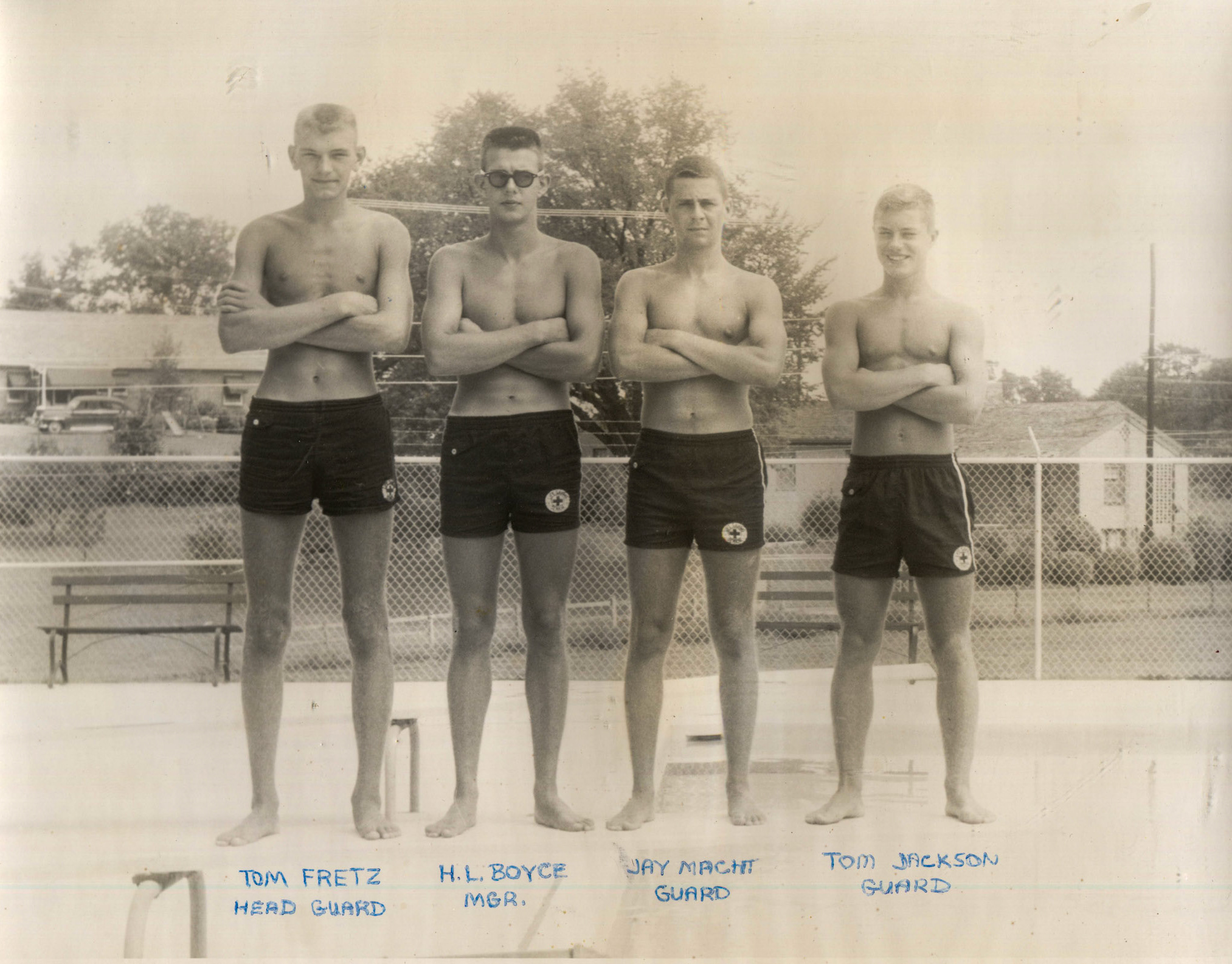The village of Downsville grew at the intersection of two well-traveled roads - the road from Sharpsburg to Williamsport (Spielman Road) and the road to Chew's Farm, also known as The Manor Road (Downsville Pike). Situated on Lord Baltimore's 10,000-acre Manor of Conococheague, the manor eventually became the private property of the Ringgold family. General Samuel Ringgold (1770-1829) lived in a mansion house known as "Fountain Rock" at today's St. James College. The original 1796 manor house burned in 1926. Today Claggett Hall is a close replica of the original structure. By 1828, Ringgold was bankrupted, had sold off almost all of his land, and lived in a rented house in Hagerstown.
The village was named for Charles G. Downs in 1848, the first postmaster, and general store owner.
(click on any photo to enlarge)
The only known image of the original Downsville School House built in 1895. Grafton Downs was the first principal.By 1938, the school was deemed unstable. Construction for the new Downsville school began in the spring of 1939 and was ready for the fall term. That school house is now the home to the Downsville Ruritan Club.
Undated photo of students at the Downsville School. The clothing suggests about 1915-1920.
Land for the "Christian Congregation of the Church for Christ" was acquired by several local families in 1868. Through a community effort, they constructed this church and called it "Bethany Church."
Services were held here until 1956 when a new church was built along the Downsville Pike.
The old church still stands today as an apartment building.
Photo of the Bethany congregation about 1912.
Photo of the congregation about 1950
A 1905 photo of some ladies of the congregation superimposed over a modern photo.
July 1938 Photo of the Bethany Congregation superimposed over a modern photo.
Centered in front of the marquee is Russell Leroy Dick holding his 2-year-old son Charles Edwin "Sonny" Dick. To the right, with her hat tied down, is Ruby Gertrude Renner Dick. To her right is 5-year-old Richard Lee Dick. The young man leaning on the marquee is Lawrence Beachley Izer, age 6. Pastor C. A. Frick in the dark suit far left.
In the mid-1950s, the congregation of Bethany Church elected to build a new church just north of the village square. The Richard Coffman family donated the land, and the community united in fundraising efforts.
This photo was taken at Spielman and Bakersville Road intersection when the Downsville farmers met to plow and plant an immense field. The produce was sold to benefit the church fund.
The house known as Mt. Moriah stands in the background.
The Downsville Church of the Brethren still is active just south of Downsville along Dam #4 Road.
A newspaper article noted the band members as Charles W. Taylor, William Taylor, Harry Reid, D. Elmer Sumners, Clyde McMillian, Claude Speaker, Walker Speaker, Charles Nalley, Roy Reid, and E. C. Beachley.
The first newspaper report of the Downsville Cornet band playing was at a church picnic at Gus Izer's grove in Downsville on Saturday, August 20, 1913.
The band played at picnics, weddings, and local activities. There are no reports of the band in the newspaper after 1915.
The Downsville Terriers were organized in February of 1932 at the home of Jesse Shank. Officers elected at the meeting were: Manager Jesse Shank; secretary Raymond Buharp; treasurer George Frick; captain Edgar Cline; and scorekeeper Merle Long.
1897, probably at the Downey Farm south of Downsville.
L to R: Edward Dellinger, Allice Long, Harry Bowers, Keeley Long, Milton A. Shunk, and William Betts.
In about 1890, a young lady of the town Effie Long (1875-1931) wrote the history of her town. It is a terrific remembrance of a young lady who lived there. Effie never married and was a schoolteacher in Downsville and St James.
Downsville 1877
History of Downsville by Effie Long
Downsville district, a thriving agricultural community with the village of Downsville as its community center, is located in the southwestern part of Washington County. The Potomac River and Chesapeake and Ohio Canal serve as its western boundary. The village of Downsville is situated at the intersection of the roads leading from Hagerstown to Dam No. 4 and from Williamsport to Sharpsburg Pike.
Originally this district was a part of the district of Williamsport. It being made by the cutting of the southern portion of this district in 1878 at the request of the county commissioners of Washington county.
Downsville was founded in 1848 and was named for Charles Downs, the first storekeeper, who died in 1857. The first house, which was made of logs, was built by Anthony Lampkin and stood on the site of the parsonage. The second was built by Christopher Shank and was located near what is now T.J. Fahrney’s store. This house was later destroyed by fire and remained in ruins for many years. The third was built by George Taylor being called the Point Look-Out house, which has recently been converted to a stable. This house was for a long time the only one in the triangular tract of land made by the present state road, Hagerstown pike and the Natural Well road. The house now occupied by B. F. Daugherty and Henry Davis were built in the other angle.
The village has steadily grown until it is now a village of --- houses, one church, a school, two stores and a public hall. Downsville has had a variety of industries namely wagonmaker‘s shops, three blacksmith shops, a tailor shop, three stores, two shoemakers, and one mill.
The men who conducted these industries were Christopher Shank who had a wagonmaker‘s shop located on the present site of Fahrney’s. Daniel Bowers followed the wagonmaking business on the present site of the residence of A.L. Bloom. Later he opened a store now occupied by Samuel Shank, Jr. Davy Lambert, Emanuel Long, George Lyddon, Daniel Highbarger were the blacksmiths of years ago. Harvey Bitner was the last having his shop in the old school building. Tom McCoo was the tailor, Charles Downs, the founder of Downsville, was the first storekeeper, followed by his brothers, Christopher, Lewis and Charles Jr.
Long's Store once stood on the northwest corner of Downsville square, In the 1950s, the State of Maryland widened the road and demolished the store.
The first store was in the dwelling now occupied by J. Frank Marshall. John Reichard, Daniel Bowers, Joshua Long, Edward Downs, Grafton Downs followed later. T. J. Fahrney and A. L. Bloom are the present merchants. Goods were formerly shipped to Frederick by rail thence to Downsville by wagons. Squire Thompson and Morgan Clark were the veteran shoemakers.
Alex Shafer built the first mill in the community. This proved a benefit to the agricultural interest. The farmers marketed their wheat and purchased flour in Baltimore until the construction of the Chesapeake and Ohio Canal when it was loaded on boats at different points. William Avis and Charles Izer succeeded him. Rudolph Charles is the present owner, but the mill is not in use. The warehouse having been taken away by the flood of 1889.
Mail in the early 1850s were brought twice a week from Williamsport. Later daily mail was carried from Breathedsville Station by carrier until rural free delivery services was begun.
During the Civil war period Downsville was the scene of many skirmishes. Sentiment was evenly divided. Opinions and utterances were carefully expressed. Clinton Rentch, son of Andrew Rentch who was a southern sympathizer was killed in Williamsport for saying “Hurrah for the Rebels”. Old residents still relate many experiences which happened during the war, especially during and after the Battle of Antietam.
Breastworks, still visible, were thrown up from Hagerstown to the Potomac River, running through the community. This was done by the rebels after the Battle of Gettysburg as a protection for the rebel army to cross the Potomac River. The river at this time was swollen and crossing was made difficult. A pontoon bridge to aid in the crossing was constructed in “the neck“ of the Potomac. This was hotly contested by the Union forces. Squire Thomp- son and John Davis, two union sympathizers, while visiting the scene of the skirmish killed a rebel soldier. When the rebel army came back to Downsville, these two citizens were obliged to seek refuge in the north. Several of the large land owners held slaves, but were freed before the end of the war. Many remained with their masters which bespeaks of the goodwill existing between them.
Hampshire's Store in Downsville 1944
This community was in the path of the march of General Braddock from Baltimore to French forts in the west. He traveled in one hundred fifty wagons secured through the ef- forts of Benjamin Franklin.
Since the early history of Downsville, a great change has taken place in the system of land operation. At present the farms are farmed by tenants whose landlords live in the city. But enough of the community spirit has been fostered to emulate the spirit of former generations and to educate the present, and coming generations through its community institutions for higher and nobler ideals.
Downsville and the Civil War
Private Elisha Hunt Rhodes of Company D, 2nd Rhode Island Volunteers as part of the Union army 6th Corp were encamped in Downsville for about a month beginning in early October 1862.
"Our camp is in a fine oak grove near Downsville. This town boasts of a church, school house, a small store and about twenty houses. It is really a very pretty little town"
In early October, following the September 17th Battle of Antietam, President Lincoln came to Sharpsburg and met with his top commander General George McClellan. The visit was immortalized in Alexander Gardner photographs. What is little known is that President Lincoln and General McClellan also inspected the troops at Downsville
"Near Downsville, Md., - On Friday last our Corps (6th) was received by President Lincoln accompanied by General McClellan. In spite of our old, torn and ragged clothes the troops looked well as the lines stretched over the hills and plains."
During the Civil War, Simon Bland fled from Virginia across the Potomac River to escape slavery. He served as a "boot black" to Union troops stationed at Williamsport for some time. He later moved to Downsville where he worked hard, saved money, and was a respected community member. He bought a small parcel of land where he built this fine stone house along the Downsville Pike. He died here in 1925 at age 78.
Thank you to the Mcleods for being excellent stewards of this lovely early home.
